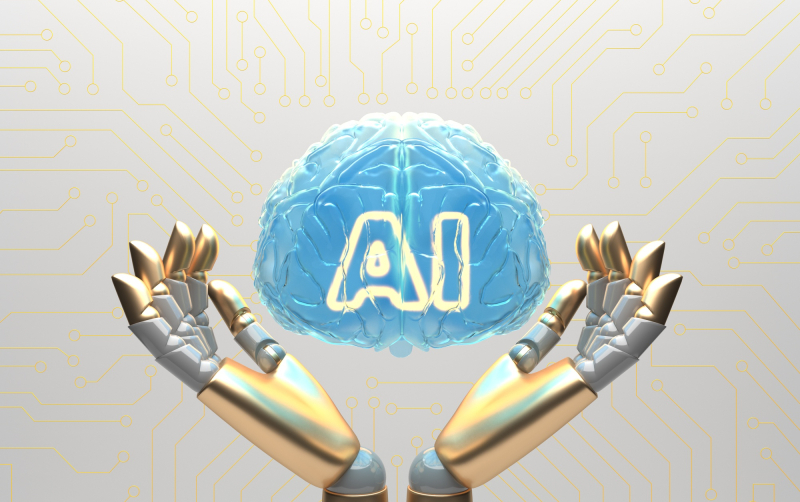New AI Technologies Introduced in 2024

1. Multimodal AI Architectures
Multimodal AI has reached a new pinnacle, demonstrating the ability to interpret and generate data across diverse modalities—text, visuals, soundscapes, and motion.
Notable Progress: These systems excel at synthesizing information from multiple formats, enabling nuanced and context-aware applications.
Utilizations: Whether revolutionizing medical diagnostics by integrating imaging with textual reports or redefining content creation with dynamic text-visual amalgamations, the potential of multimodal AI is boundless.
2. AI-Orchestrated Video Fabrication
In 2024, the craft of generating hyper-realistic videos from textual narratives has matured remarkably.
Illustration: OpenAI introduced Sora, an avant-garde AI video generator capable of translating descriptive prompts into lifelike visual stories.
Impactful Fields: This advancement is catalyzing innovation in entertainment, pedagogy, and marketing, allowing creators to fabricate high-quality video content without technical expertise.
3. Open-Source AI Renaissance
The proliferation of open-source AI frameworks has democratized access to cutting-edge algorithms, empowering a global community of innovators.
Leading Models: Platforms like Meta’s Llama 2 and Mistral AI’s Mixtral are now furnishing robust natural language tools.
Catalytic Effects: By providing transparent, modifiable frameworks, these models spur rapid innovation, fostering a collaborative ecosystem of developers and researchers.
4. AI-Enriched Software Engineering
AI is now a cornerstone in software development, enhancing efficiency, accuracy, and creativity.
Exemplary Tools: GitHub Copilot and its contemporaries have evolved into sophisticated aides, offering real-time debugging, optimization, and coding solutions.
Advantages: These innovations expedite development cycles, curtail errors, and streamline application delivery.
5. Strides Toward Artificial General Intelligence (AGI)
The quest for AGI—machines capable of human-level cognition—has seen considerable strides in 2024.
Core Developments: Enhanced contextual reasoning, adaptive learning paradigms, and intricate problem-solving capabilities stand at the forefront.
Visionary Prospects: Though AGI remains an aspirational frontier, its burgeoning sophistication signals a leap toward systems with true generalized intelligence.
6. Text-to-3D Revolution
The ability to conjure 3D assets from textual descriptions has gained momentum, fundamentally altering creative industries.
Breakthrough Examples: Novel tools now empower designers to materialize vivid 3D constructs through simple textual input.
Applications: This innovation is revolutionizing animation, architectural design, and e-commerce by drastically trimming manual labor.
7. Edge AI and Instantaneous Computing
Edge AI, emphasizing local data processing rather than cloud reliance, has ascended to new heights.
Landmark Advancements: Real-time analytics for IoT devices, autonomous machinery, and intelligent home ecosystems have become a reality.
Key Merits: By minimizing latency and bolstering privacy, these technologies enable rapid, secure decision-making in critical scenarios.
8. Eco-Conscious AI Development
Sustainability has become a linchpin in AI evolution, with a focus on reducing environmental impact.
Eco-Friendly Techniques: Innovations such as federated learning and energy-efficient model architectures are optimizing AI’s energy consumption.
Green Imperatives: These practices are addressing AI’s carbon footprint, fostering a harmonious balance between technological growth and environmental responsibility.
9. Hyper-Personalized AI Experiences
In 2024, AI has pushed the boundaries of personalization, tailoring user interactions with remarkable precision.
Illustrative Cases: AI platforms now dynamically adapt content, recommendations, and user interfaces based on granular behavioral insights.
Transformational Sectors: E-commerce, streaming services, and customer engagement platforms have seen unparalleled surges in user satisfaction and loyalty.
10. AI-Driven Ethical Frameworks
The rapid integration of AI has spurred the creation of governance tools to ensure ethical compliance and transparency.
Innovative Solutions: Automated mechanisms for bias detection, explainability, and adherence to regulations such as the EU AI Act are now available.
Wider Implications: These tools bolster organizational trust, ensuring responsible AI deployment and mitigating risks associated with unchecked adoption.
Conclusion
The transformative innovations of 2024 exemplify a paradigm shift toward more accessible, efficient, and conscientious AI practices. From multimodal systems and generative video technologies to AGI advancements and eco-friendly developments, these breakthroughs are rewriting the boundaries of what AI can achieve. Enterprises and technologists who embrace these innovations are poised to lead in an increasingly AI-centric world.






